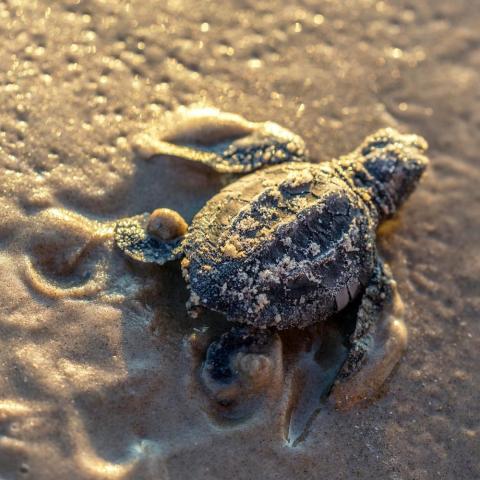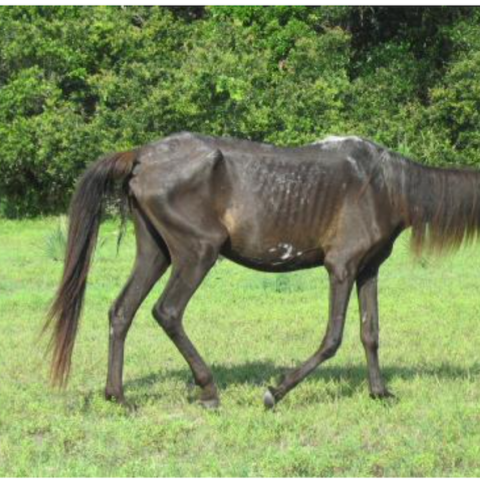
Ocean waves cover a sea turtle nest in Fort Lauderdale, Florida. This photograph was taken during permitted research activities./ Matthew Ware, Florida State University
We often hear about the threats sea-level rise pose to human coastal infrastructure, but little seems to get out about how sea-level rise can impact wildlife. A new study from Florida State University casts a somber prediction for sea turtles, which already are facing long odds for survival.
Climate change is driving sea-level rise, and when coupled with coastal development, the two are marginalizing suitable nesting habitat for the turtles, according to the study published recently in the journal Regional Environmental Change.
"A reduction in available nesting habitat coupled with the pressures associated with coastal development could likely have detrimental impacts on the reproductive output of sea turtle nesting areas in the U.S. and population stability," said Mariana Fuentes, an assistant professor of oceanography in the FSU Department of Earth, Ocean and Atmospheric Science and the study's lead author.
Six of the seven sea turtle species are threatened with extinction due to human impacts, according to the Oceanic Society.
The Florida State researchers modeled suitability of coastal habitats in the eastern United States by 2050 for loggerhead, green, and leatherback sea turtle nesting, considering predicted sea-level rise and future climates.
The results differ for specific places and species, the researchers say, but the overall picture is one of decreases in suitable nesting grounds and increasing pressure from coastal development.
Loggerhead turtles will see a decrease of about 10 percent in suitable nesting areas, with deteriorating conditions in Florida, South Carolina, and North Carolina. Green turtles will see some improved nesting habitat in southwest Florida, but less suitable habitat elsewhere in the state and the Carolinas. Overall, green turtles will see a decrease of about 7 percent in suitable nesting habitat along the U.S. East Coast. Leatherback turtles won't see major changes in the broad availability of suitable areas.
But rising seas and coastal development aren't the only threats confronting sea turtles. Turtles need certain climate conditions for egg incubation, and the researchers noted that a changing climate will mean different conditions for precipitation and temperature.
Sea-level rise is projected to submerge about 80 percent of current habitat that is predicted to have a suitable climate for future egg incubation, the study said. But sea-level rise is also projected to create new beaches. In fact, a 0.5-meter sea-level rise (a conservative estimate) is predicted to result in a net habitat gain for the sea turtle species, the researchers studied. However, coastal development will be an issue in most of those areas, which will impact how well they function as nesting sites.
The researchers found a few regions in North Carolina and South Carolina that are projected to have high or very high climate suitability for sea turtle egg incubation, little risk from sea-level rise and no substantial housing growth, which will make them optimal nesting habitats. Identifying these areas could inform management and conservation policies.
In other places where development is expected to add pressure to sea turtles, management strategies, such as turtle-friendly lighting, removing beach debris, and not disturbing nesting areas will help minimize additional impacts of human activity on these animals.
"Sea turtles have existed for millions of years, and they have persisted through dramatic changes in climate in the past," Fuentes said. "They have the ability to adapt to changing conditions, but coastal development and the unprecedented speed of current climate change are things they have never had to deal with, which may hinder their ability to adapt to the future."
Traveler footnote: Cape Hatteras National Seashore, Cape Lookout National Seashore, Cumberland Island National Seashore, Canaveral National Seashore, Gulf Islands National Seashore, and Padre Islands National Seashore all offer important nesting habitat for sea turtles.




 Support Essential Coverage of Essential Places
Support Essential Coverage of Essential Places







Add comment